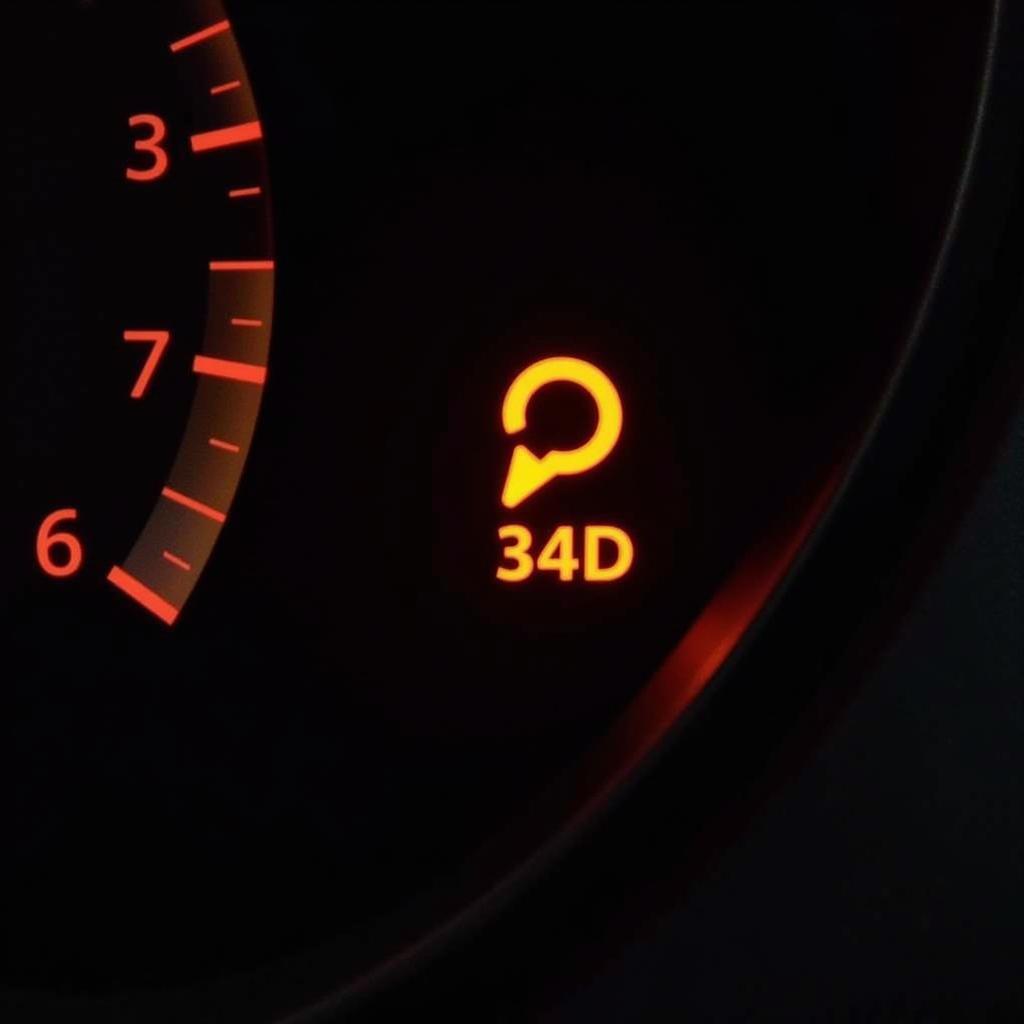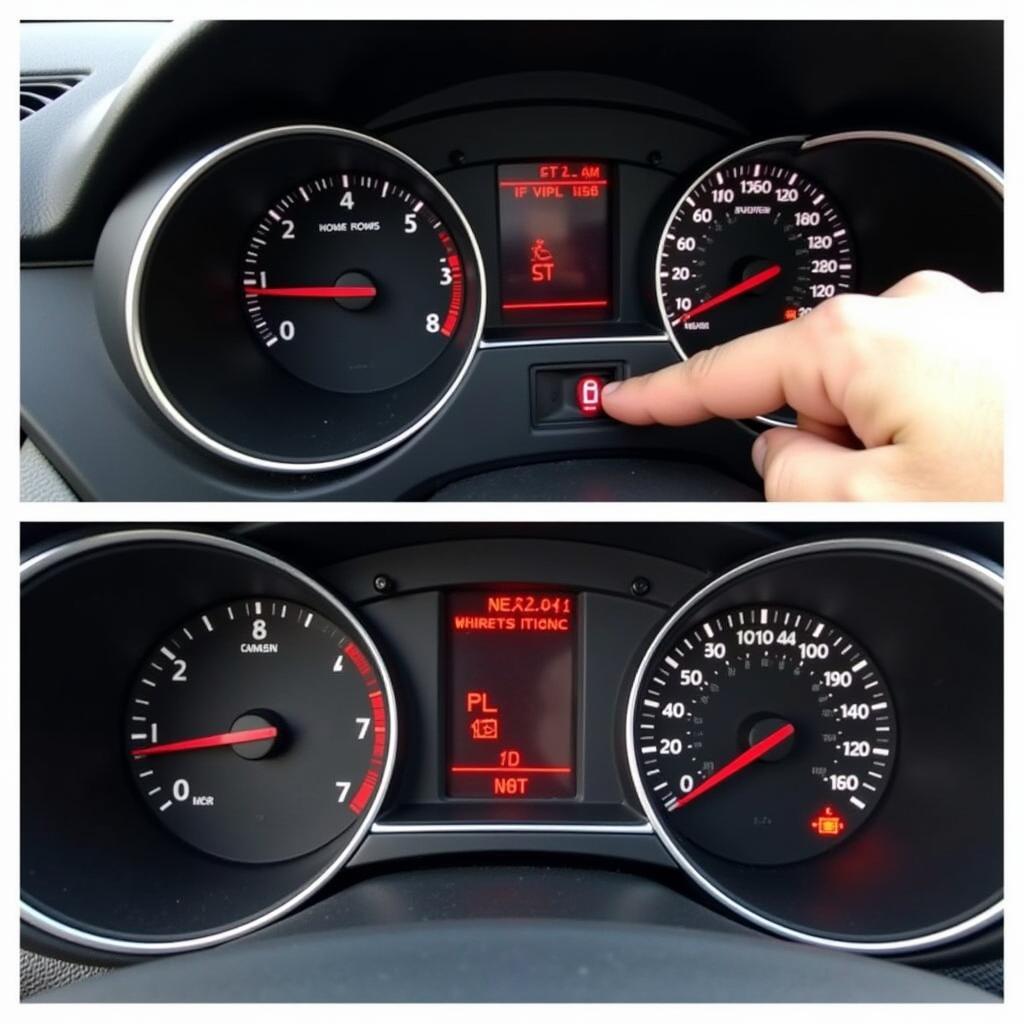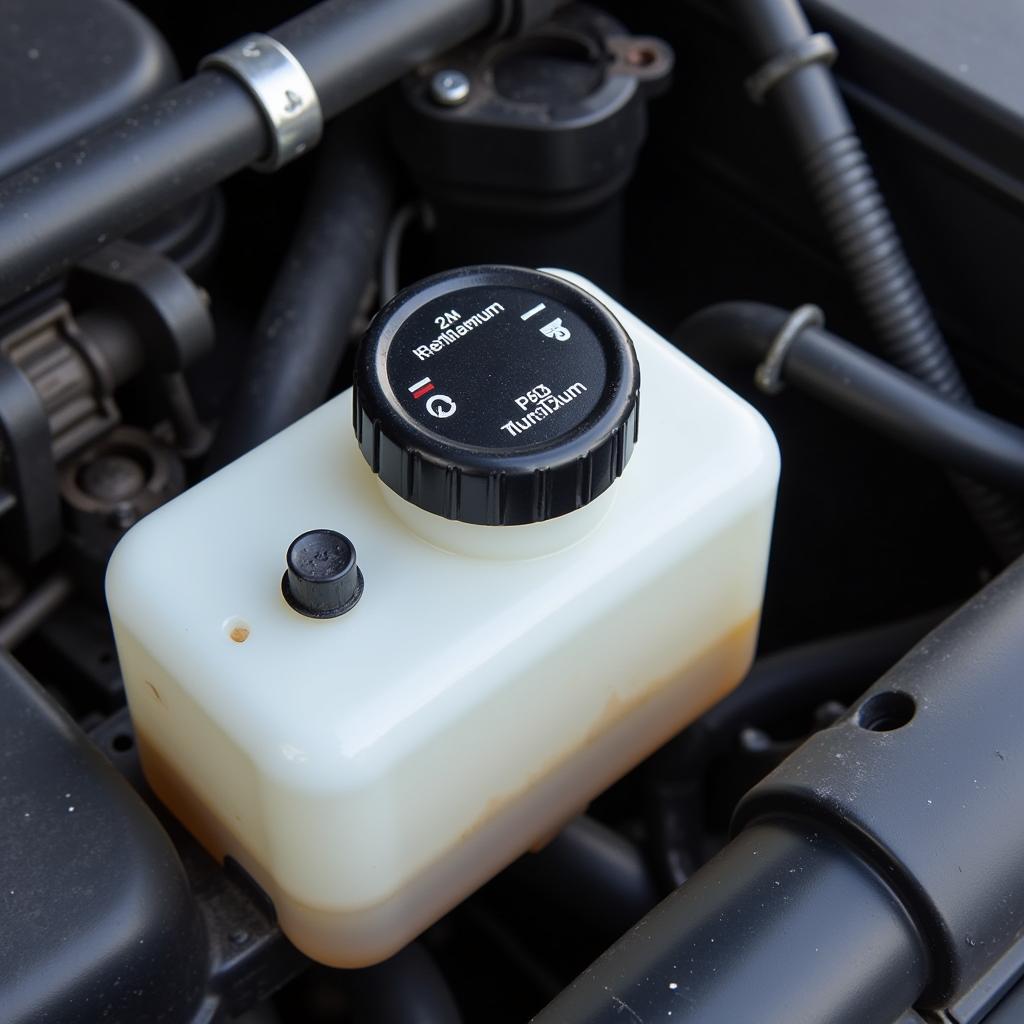Seeing an oil change warning message pop up on your Seat Ibiza’s dashboard can be a bit unnerving, but don’t panic! This article will guide you through understanding what this warning means, why it’s essential to address it promptly, and what steps to take to ensure your Seat Ibiza keeps running smoothly.
 Seat Ibiza Oil Change Warning Light
Seat Ibiza Oil Change Warning Light
What Does the Oil Change Warning on a Seat Ibiza Mean?
The oil change warning message on your Seat Ibiza is a friendly reminder from your car’s onboard computer that it’s time for an oil change. This message is usually triggered by a combination of mileage and time since the last oil change. Think of it as your car’s way of saying, “Hey, I need fresh oil to stay healthy!”
Why is Regular Oil Change Important?
Your Seat Ibiza’s engine is a complex piece of machinery with many moving parts. Engine oil serves as a vital lubricant, reducing friction between these parts, preventing wear and tear, and helping to dissipate heat.
Over time, engine oil degrades, losing its lubricating properties and becoming less effective at doing its job. Driving with old, dirty oil can lead to:
- Reduced engine performance: Your car might feel sluggish and unresponsive.
- Increased fuel consumption: As the engine works harder, it demands more fuel.
- Overheating: The lack of proper lubrication can cause excessive friction and heat buildup.
- Engine damage: In extreme cases, driving with severely degraded oil can lead to catastrophic engine failure, requiring costly repairs.
How to Reset the Seat Ibiza Oil Change Warning
Addressing the oil change warning involves two main steps:
- Get an Oil Change: This seems obvious, but it’s the most critical step! Take your Seat Ibiza to a trusted mechanic or service center specializing in Seat vehicles. They will drain the old oil, replace the oil filter, and refill the engine with fresh, high-quality oil that meets your car’s specifications.
- Reset the Warning Message: After the oil change, the warning message on your dashboard needs to be reset. While the method might vary slightly depending on the specific model year of your Seat Ibiza, here’s a general guide:
- Turn the ignition to the ON position (do not start the engine).
- Press and hold the trip odometer reset button (usually located on the instrument cluster).
- While holding the button, turn the ignition OFF and then ON again.
- Continue holding the button for about 10-15 seconds until the service light resets.
 Resetting Oil Change Warning
Resetting Oil Change Warning
Note: If you are unsure about resetting the warning yourself, it’s best to ask your mechanic to do it for you when they perform the oil change.
Can I Ignore the Oil Change Warning?
While it might be tempting to ignore the oil change warning, especially if you’re busy, it’s crucial to remember that regular oil changes are essential preventative maintenance. Ignoring this warning for prolonged periods puts your Seat Ibiza at risk of the issues mentioned earlier, ultimately leading to more significant problems and potentially expensive repairs down the line.
Seat Ibiza Oil Change Intervals
The recommended oil change interval for a Seat Ibiza can vary depending on factors such as the model year, engine type, and driving conditions.
- Refer to your owner’s manual: The best source for this information is your Seat Ibiza owner’s manual. It will provide specific guidelines tailored to your car.
- General guideline: As a general rule of thumb, most Seat Ibiza models recommend an oil change every 9,000 – 10,000 miles or once a year, whichever comes first.
Beyond the Oil Change: Additional Tips for a Healthy Engine
Along with regular oil changes, here are some extra tips to help keep your Seat Ibiza’s engine in top shape:
- Use high-quality oil: Always use engine oil that meets the specifications outlined in your owner’s manual.
- Check your oil level regularly: Make it a habit to check your engine oil level at least once a month.
- Address leaks promptly: If you notice any oil leaks, get them checked and repaired by a qualified mechanic as soon as possible.
- Be mindful of your driving habits: Aggressive driving with rapid acceleration and hard braking can put extra stress on your engine and lead to faster oil degradation.
Conclusion
Addressing the oil change warning light in your Seat Ibiza is not just about silencing a beep on your dashboard; it’s about investing in the long-term health and performance of your vehicle. By adhering to the recommended oil change intervals and adopting proactive car care practices, you can ensure that your Seat Ibiza continues to deliver a smooth and enjoyable driving experience for miles to come.
seat ibiza orange warning light
FAQs
Q1: What type of oil does my Seat Ibiza need?
A: The best source for this information is your owner’s manual. It will specify the recommended oil type and viscosity for your particular engine.
Q2: Can I change the oil myself?
A: While it is possible to change the oil yourself if you have the tools and experience, it’s generally recommended to have it done by a qualified mechanic. They can ensure the job is done correctly and dispose of the old oil responsibly.
Q3: What happens if I continue driving with the oil change warning light on?
A: Continuing to drive with the oil change warning light on for extended periods can lead to engine damage. It’s essential to address the warning as soon as possible.
Q4: How long can I drive after the oil change light comes on?
A: While you shouldn’t ignore the warning, it’s generally safe to drive a short distance (a few hundred miles) to get to a mechanic for an oil change.
Q5: Does the oil change interval change if I mainly do short trips?
A: Yes, frequent short trips where the engine doesn’t reach full operating temperature can lead to faster oil degradation. Refer to your owner’s manual for recommended intervals for these driving conditions.

